I know it’s a strange time to be writing about travel, but, unsurprisingly, I have a lot of time on my hands right now so figured I would just get this post out there ASAP, especially since so, so many people specifically requested it. I hope it answers your questions, but if not, you know where to find me on social media.
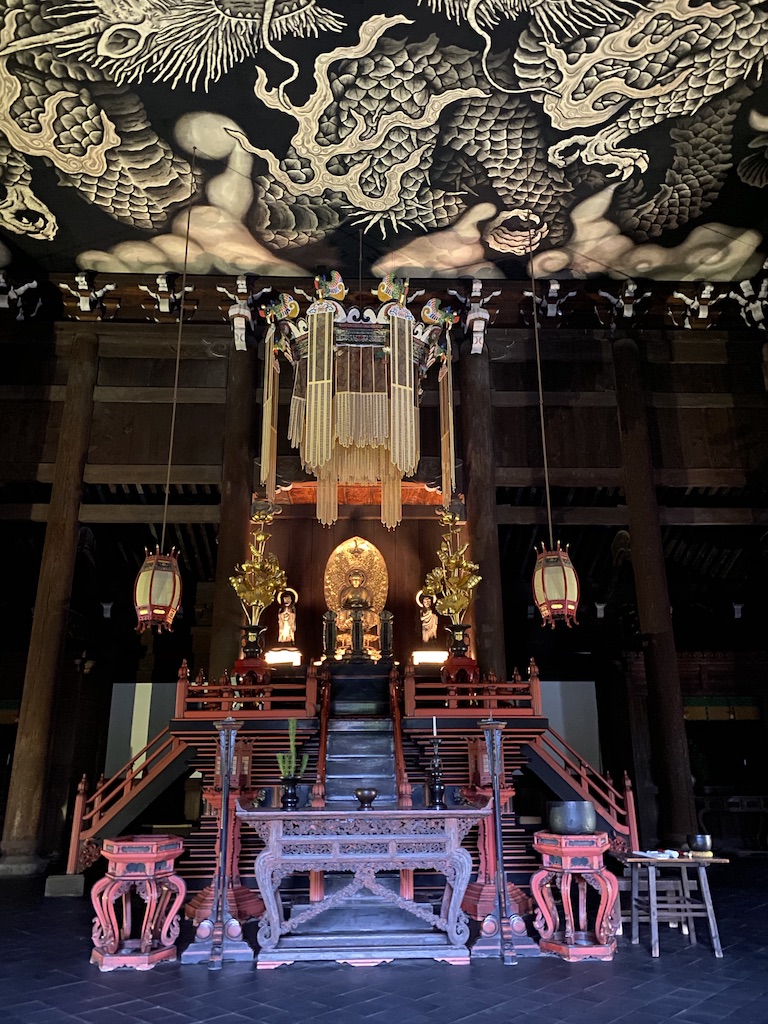
Why did you go to Japan?
Japan is somewhere I’ve been really wanting to go for about 10 years. I love fun, and Japan just looked fun. And really different from anywhere else I’ve ever been. I take a lot of trips, so why hadn’t I got round to it yet? Well, I guess because there’s a perception that Japan is a) extremely expensive to travel to and b) extremely laborious to plan a visit to. What finally convinced me the time was right was my buddy Alice going to Japan last September, since Alice is (and I hope she doesn’t mind me characterising her this way) neither an uncontrollable money-spunker, nor someone who’s super into wildly labour-intensive plans.
So… is it expensive?
Yeah. Bits of it are. Flying there is expensive if you want to fly direct (which I did, because I do not like flying). But if you’re happy to change planes somewhere along the way (especially if you’re happy to change in Russia or China, although I’ve heard some horror stories about the connections in Russia so do your research), you could save a lot of money. The flights felt like the biggest financial commitment of the whole trip, but I just had to suck it up if I wanted to go, and especially if I wanted to fly direct. Obviously, flying direct was a good idea in my case, because by the time we went, coronavirus had broken out and the cheaper connecting flights I would have chosen went via China and, I assume, would have been cancelled.
Not all of it is expensive, though. What different people perceive as ‘expensive’ will vary, and I’m a renowned luxury bitch, but I honestly found that outside of Tokyo, accommodation wasn’t bad at all. I’ll go into my itinerary in greater detail later but, we spent 3 nights in one Tokyo neighbourhood at the beginning >>> 3 nights in Kyoto >>> 3 nights in Osaka >>> 5 nights in another Tokyo neighbourhood at the end. Tokyo was a lot more expensive, especially for the first few nights staying in Shibuya, but the average price of our hotels in Kyoto and Osaka was about £70 a night. They were both in convenient locations, spotlessly clean and with enough room for two people and all our junk. Obviously, if you’re used to staying in hostels then that will feel like a lot, but it felt pretty manageable in the context of Japan’s reputation of being madly expensive.
You’ll be pleased to hear that food and drink is really good value for money. The nicest ramen you’ve had in your life will probably cost about £7. I had beers that cost 75p – £2. And there’s always the legendary convenience stores where you can pick up a juicy fried chicken breast to eat on the street for about £1. If you’re vegetarian you’ll need to do a lot of research and you’ll probably have to eat in fancier places that specifically cater to vegetarians, but if you’re not, it’s incredibly easy to eat well for not a lot of money.
One thing I can’t really advise on is the cost of museums and tourist attractions. We visited when Japan was still seen as one of the OG coronavirus countries, and one of their containment tactics was to close tourist attractions. We would probably have gone to the Mori Art Museum and maybe Teamlab:Borderless, but looking back on the 14 packed days we spent in Japan, I don’t actually know when we’d have found the time. I guess that’s a good lesson: you can spend two weeks in Japan and not have time to go to a single museum. Shrines and temples were still open, which are either free or have a small charge.

Tell me about those logistics…
The two biggest logistical elements sort of go hand in hand. One is deciding where you want to travel to. The other is deciding whether you want to get a JR Pass or you want to book individual train tickets.
Because we’d never been before, we decided to go to Tokyo > Kyoto > Osaka > Tokyo. I refer to this as the Basic Bitch Holy Trinity because it’s an ideal and therefore common way to do your first trip to Japan. Japan is very big and very diverse – huge cities, mountains, islands, tiny old-fashioned towns. You just have to decide what you want out of your trip. That said, I really do feel like for a manageable first, two-week trip to Japan, you could do a lot worse than Tokyo, Kyoto and Osaka.
Should I get a JR Pass?
You’re in Japan, so you’re going to want to travel by train. Even if there’s another option, you’re still going to want to travel by train. The bullet train is fun, it’s fast, it’s clean, it’s reliable and punctual in a way that Brits will struggle to relate to, it’s relaxing to the point of hypnosis, and if you’re travelling west out of Tokyo you might see Mount Fuji out of the window.
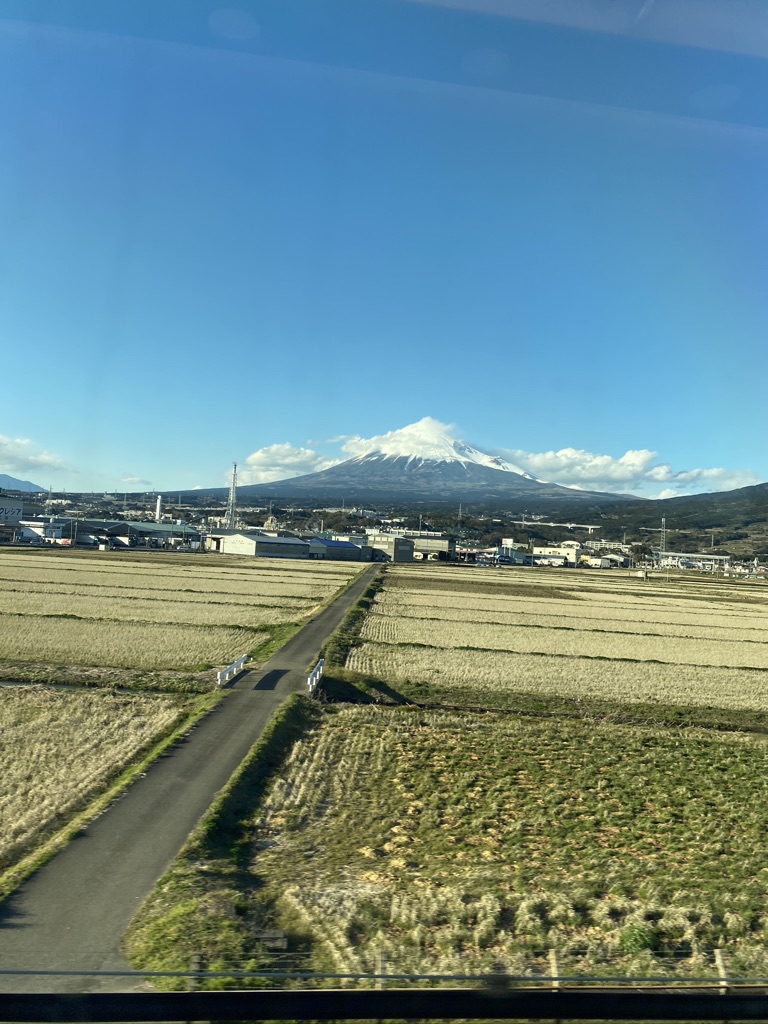
But should you get a JR Pass or book the tickets separately? That depends on a few factors.
I booked my JR Pass through this website, partly because the company is run out of the same office building where I work. Any JR Pass-vendor website will explain exactly how things work, but while you’re here I’ll give you the basics. A JR Pass is a train ticket that allows you to travel throughout Japan on the rail network (which sometimes includes some lines in cities like a really useful subway line in Tokyo) without paying anything extra. It does not include the fastest bullet trains, but even the slowest bullet train is faster than any train you’ve taken in the UK. You can get a JR Pass for 7, 14 or 21 days. Those days are consecutive.
When you buy the pass, what you receive in the post is not actually the pass itself. It’s an ‘exchange order’, which you take to a JR office in a major station (they’re all over Tokyo) and swap for the pass itself (you have to take your passport to prove you’re not a Japanese resident because this pass is only for visitors). I know this might sound confusing/like a hassle but it has a really big advantage: Japan has a lot of different rail operators, a lot of different lines going to different parts of the country. I’m sure it wouldn’t be impossible, but if you wanted to book all your train tickets yourself, you would have to navigate that system either online or in a station (stations can be… confusing) and possibly in Japanese, which may be a challenge. The JR Pass offices are clearly signposted, easy to find and staffed by people who speak English and can answer your questions. With a JR Pass you just show your pass to the guard at the ticket gates and cruise onto the train, essentially no questions asked. In most trains, there are 5 unreserved coaches which always have more than enough space for you and your luggage (the legroom is absurd), although trains get very busy during cherry blossom season and during periods with lots of Japanese public holidays so it’s best to reserve a seat on the train. Argh, that sounds like a hassle! Nope. Your friend at the JR Pass office can do that when you go to pick up your pass. Having a booked seat is included in the price of your pass and they will do it for you and give you a little envelope with your reservations in. But really, outside of peak seasons, you don’t need to reserve a seat at all.
One of the big factors in deciding whether or not to get a JR Pass is whether you’ll get your money’s worth. There are websites that have ‘JR Pass calculators’ on them, where you put in the journeys you’re thinking of taking and it’ll tell you whether it’s worth your while. For example, if you have a 7-day pass and you want to go from Tokyo to Kyoto, Kyoto to Osaka, take a day trip to Nara or Hiroshima and go back to Tokyo, a 7-day pass will pay off. I would say that even if you’re slightly under the pass paying off, the superlative ease of use would make it worth your while to get it anyway. If you speak amazing Japanese and feel comfortable navigating the different train line operators and queuing at the right booth to buy the tickets etc, then fine, but there’s just something reassuringly easy about the JR Pass.
Any other logistical points I should know about?
Another super important thing to do when you go to Japan is to pick up pocket wifi. It might seem like a frivolous extra for Insta stories etc, but honestly, good luck to anyone who doesn’t speak Japanese trying to navigate a sprawling megacity without the internet. Good luck making it out of Shinjuku station, to be honest. We got ours through the same place we bought our JR Pass and it was ready to pick up at the airport when we arrived. It’s basically a small box you carry around with you that gives you super fast wifi anywhere, all the time. Mine worked out at, I think, about £7 a day. That’s an extra expense, but I really think not having constant internet access for navigation and neighbourhood/restaurant research would have a big impact on your trip. It worked flawlessly and I don’t really have a bad word to say about it. One tip is to bring a portable charger with you for days where your internet use is particularly heavy because your wifi might run out of battery during the day.
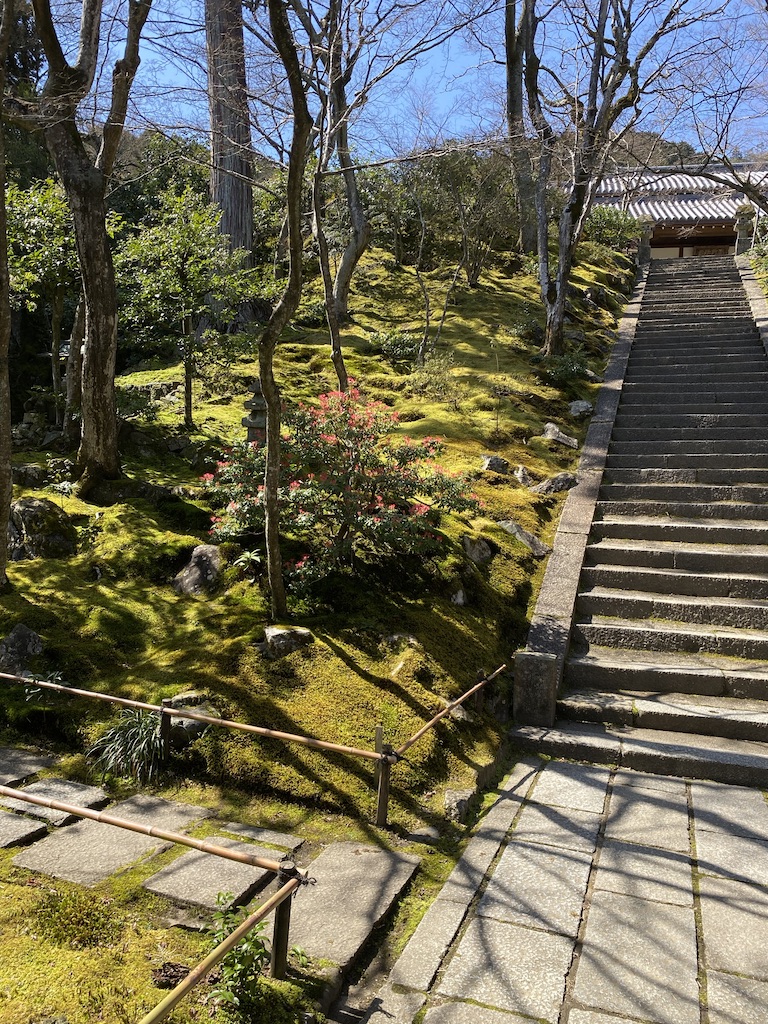
Do you speak Japanese?
Nope. I learned a bit before I went because I think it’s polite, but I don’t speak Japanese. On the one hand it’s a disadvantage because I find I always behave more adventurously in countries where I speak the language, but on the other, the odds of me becoming comfortably fluent in Japanese in 5 months were slim. Especially because I was learning on Duolingo which is (in my humble opinion) absolutely useless for Japanese. There isn’t a huge amount of English spoken, but there was never a time in a shop or restaurant or hotel where we couldn’t make ourselves understood to each other. It also helps that in lots of restaurants, especially ramen places, you buy tickets for what you want to eat from a vending machine in the entrance which has photos and often English translations, and give them to your waiter or the chef when you sit down. It’s also quite common for smaller restaurants to have one English menu which they stash in case of English-speaking visitors and can bring out if you ask for it. So in general, I think communication is not difficult at all, but there’s no harm in learning ‘Hello’ ‘Goodbye’ ‘Thank you’ ‘Please’ ‘Excuse me’ etc.
Tell me about Tokyo
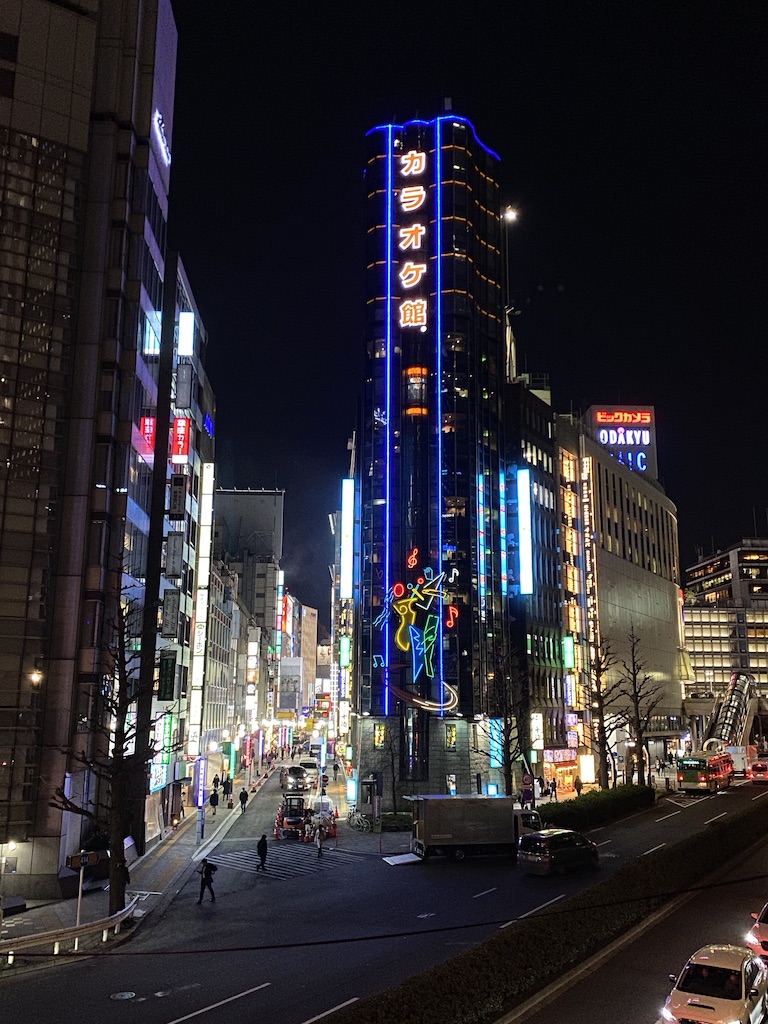
With pleasure! Tokyo is huge. It’s just huge. It’s made up of lots of neighbourhoods with different vibes. We stayed in Shibuya for the first few days and Shinjuku for the last five days of our trip, which are both entertainment/dining/shopping areas and are only a couple of miles apart. I preferred Shibuya because it felt more manageable, whereas I would give anything not to have to deal with, engage with or experience Shinjuku station again. Shinjuku itself is super fun and has loads of places to eat and drink and shop, but it’s just much less compact than Shibuya. The downside is that Shibuya’s hotels are much more expensive, partly because there aren’t as many there. We stayed in the Shibuya Stream Excel Tokyu for three nights, which was more expensive than any other hotel I think I’ve ever stayed in, but it was a perfect place to start our trip. In Shinjuku we stayed in The Knot which is a super popular mid-range hotel. I loved The Knot and would say the only downside is that it’s on the wrong side of the station for the Shinjuku action, but if you’re prepared to walk (which, in Tokyo, you gotta be), then it’s a really good choice.
As well as Shibuya and Shinjuku, we spent time in Shimo-Kitazawa, Harajuku, Omotesando, Akihabara, Kappabashi, Daikanyama, Nakameguro, Tsukiji, Ueno, Asakusa, Sumida, Ginza, Roppongi. The only neighbourhood we didn’t really ~vibe with was Roppongi. Maybe someone who’s a really big Roppongi fan could take me on a tour and show me loads of cool stuff but when we were there we were like…. okay, I guess?
One of my favourite things I did in Tokyo was the Kawaii Tour. My friend Sarah recommended it to me and I’m so glad I did it- it’s a really fun way to see Harajuku, which is a pretty overwhelming neighbourhood of shops that focus on youth culture and cute stuff. The Kawaii Tour is led by a cute gal called Mayno who takes you to different shops, cafes and arcades that she feels will help you understand kawaii culture and the neighbourhood of Harajuku. A real highlight is that she shows you how to use a purikura photo booth, which would probably be hard to navigate without Japanese assistance and expertise.
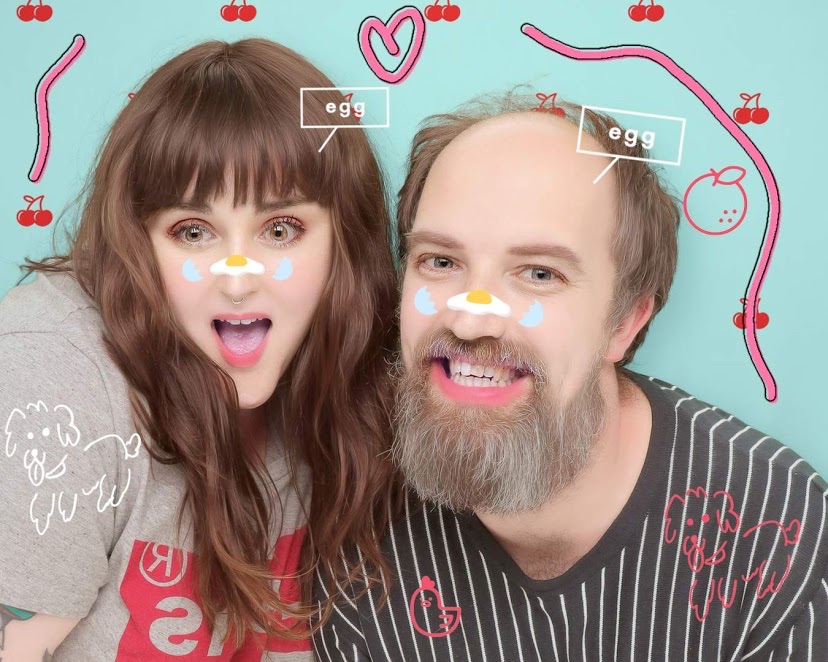
Aside from that, I just loved walking around. When it was clear that the coronavirus was shutting down tourist attractions in Japan, my response was that I didn’t feel it would affect our trip too badly because I just like strolling in different neighbourhoods, eating tasty food and buying pointless trinkets. That’s exactly what I did. We walked between 20,000 and 28,000 steps every day we were in Japan, with the biggest step count days in Tokyo. It’s just a joy to walk around in ways I can’t really articulate here. Just to see what life is like, what people are eating, what they’re wearing, where they’re shopping, what they’re queuing for.
We really liked walking around Shimo-Kitazawa on a Sunday, which is a cute, more low-rise neighbourhood with lots of record shops, coffee shops and vintage clothes shops. Another cute lil place was the branch of Tsutaya Books in Daikanyama which is one of the nicest bookshops I’ve ever been in.
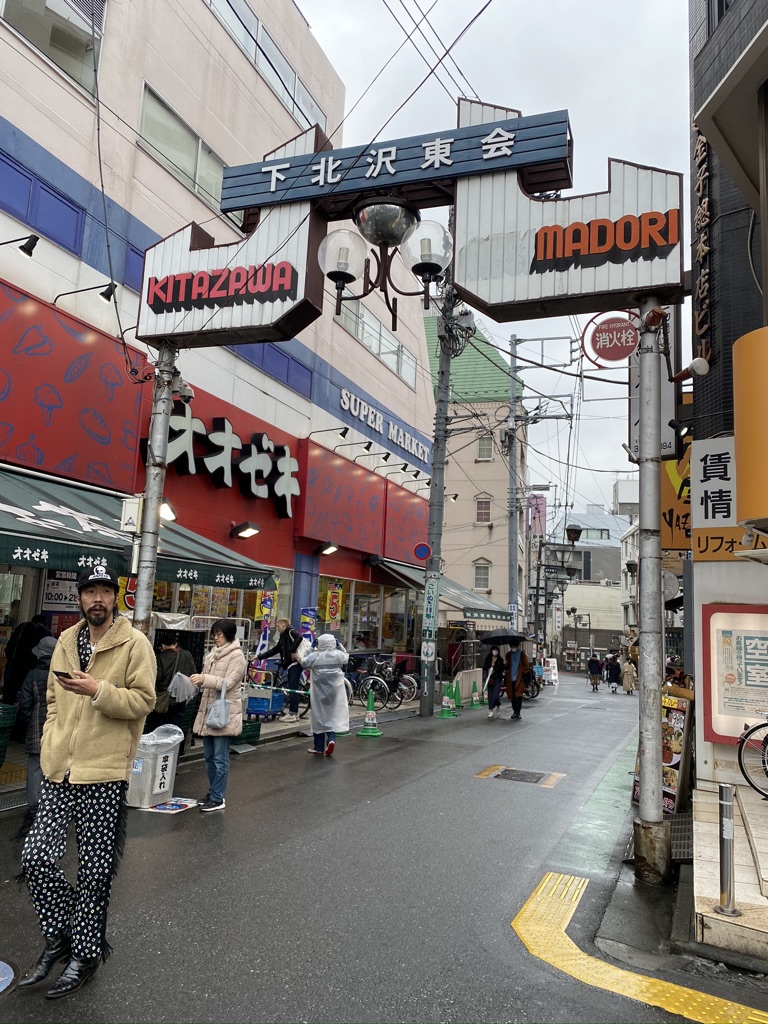
A fancy thing we did, in lieu of being able to go up the Government Building or the Skytree for views, was to go for a (very expensive) drink on the 52nd floor of the Park Hyatt. Get there in time for the bar opening at 5pm and you’ll get a front-row seat for a window view and you can watch the sun set over Tokyo.
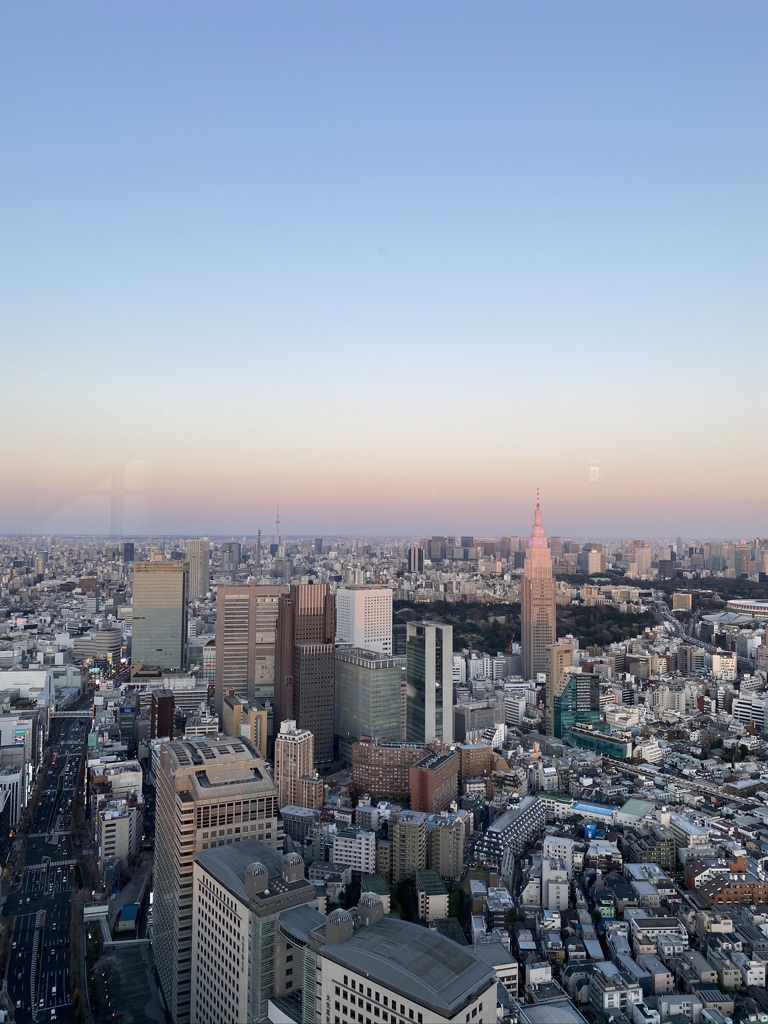
I can’t tell you what the Ghibli museum is like or which Teamlab site is better, but I can tell you that if you’re going to Tokyo with a sense of wonder then you won’t be bored for a second.
And what about Kyoto?
We left Tokyo after the first three days of our trip, knowing we had five more days there at the end. We took the bullet train to Kyoto and after dropping our bags at our hotel (Sunroute Kiyamachi), went for a walk to the historic area of the city via a wonderful temple (Kennin-ji). We were not feeling it. It felt vibeless and lifeless, pretty enough but a huge comedown after the near-hysteric highs of Tokyo earlier that day. We walked around for a while trying to find somewhere to have a drink but nowhere was open. Feeling depressed, we crossed the river. Instantly our fortunes changed. Basically, don’t judge Kyoto based solely on the historic Gion district.
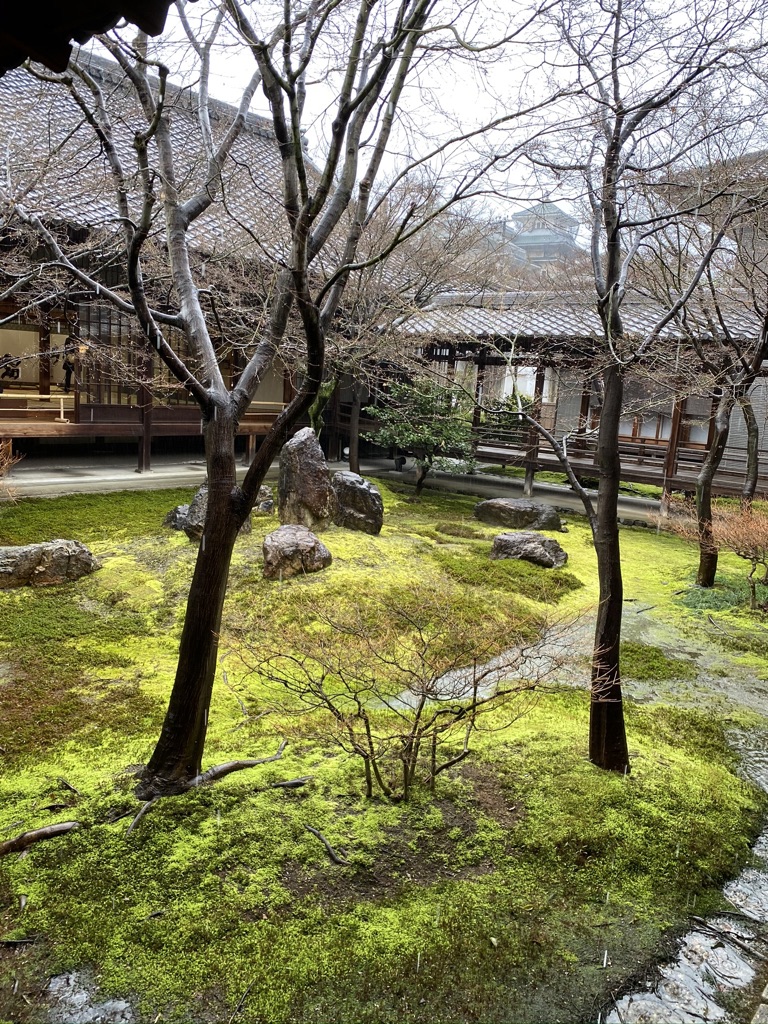
We loved the seemingly endless Nishiki Market – miles and miles of covered shopping and eating streets, punctuated by the odd shrine throughout. Shopping in Kyoto was so fun- I bought rubber stamps, paper items, makeup brushes and probably loads of other bits. There are also loads of places to eat in the area around the market (I’ll come to food later), and it’s just a super fun place to walk around and the fact it’s covered means it’s a perfect rainy day stroll.
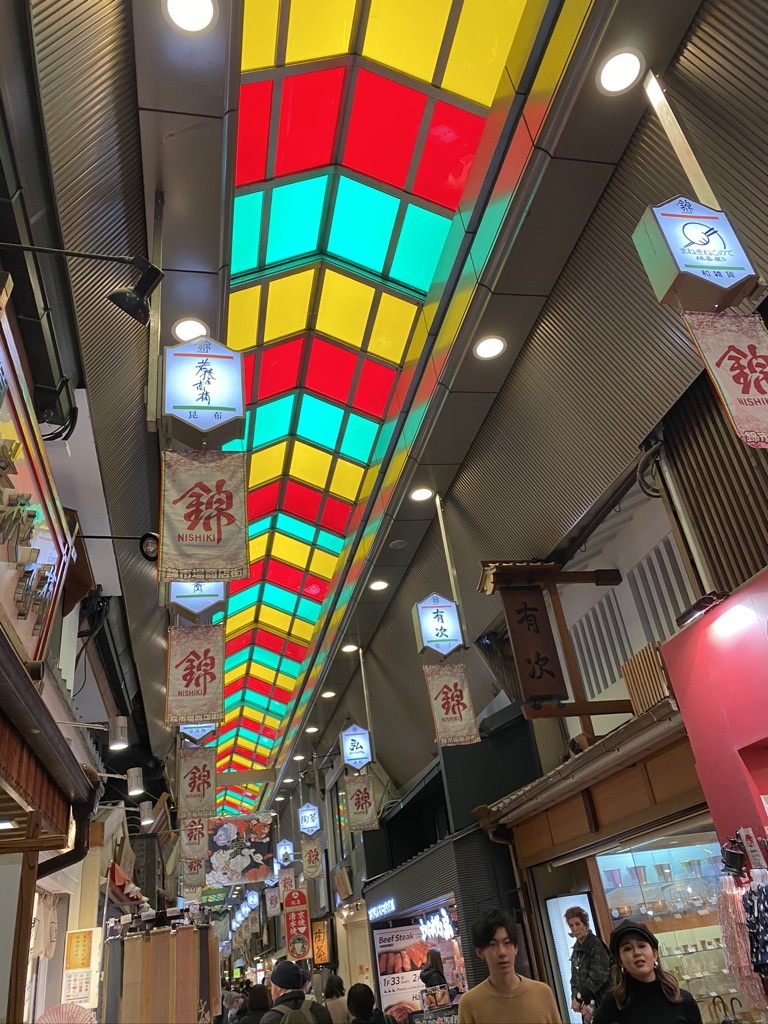
Kyoto is also a big temple town. We went to the amazing Fushimi Inari Taisha with its 1000 torii gates, which I understand is usually extremely busy but due to no tourism from China or South Korea during coronavirus, was very sparsely populated. It’s a vast complex going up the side of a mountain with different parts of the shrine along the way. It’s definitely one of the tourist must-sees of Kyoto and I’d really recommend it.
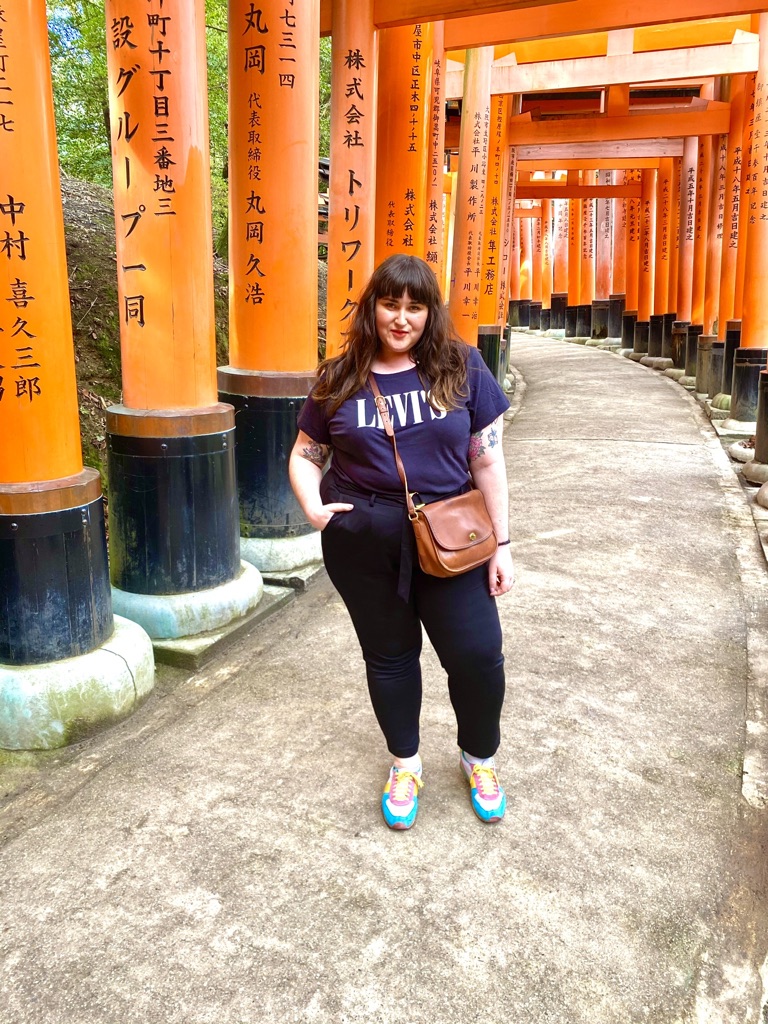
If you take a bus to the far northwest of Kyoto, you’ll get to Arashiyama, another big tourist area which many people visit for the bamboo forest. A lil tip is to buy a bus pass that day which you can buy on the bus when you get off, because that way you can go to the golden temple, Kinkaku-ji first, then take the bus to Arashiyama and then back into the centre when you’re done. The bamboo forest is fine, but there are some really cute places in the area which are worth visiting too- Jojakkoji was our favourite temple in Kyoto, utterly silent, empty and tranquil, with everything covered in moss. We loved walking through Kameyama park, down to the huge, wide river with people boating, across the river and up into Arashiyama Monkey Park. It’s basically a mountain (with a very steep and challenging incline at the beginning) where wild monkeys live at the top. You’re proper up close with the monkeys since they can roam at liberty, and if you want to feed them, you can go into a cage where you feed the monkeys on the outside. It’s a super fun little jaunt which I would recommend if you’re up for a hilly walk.
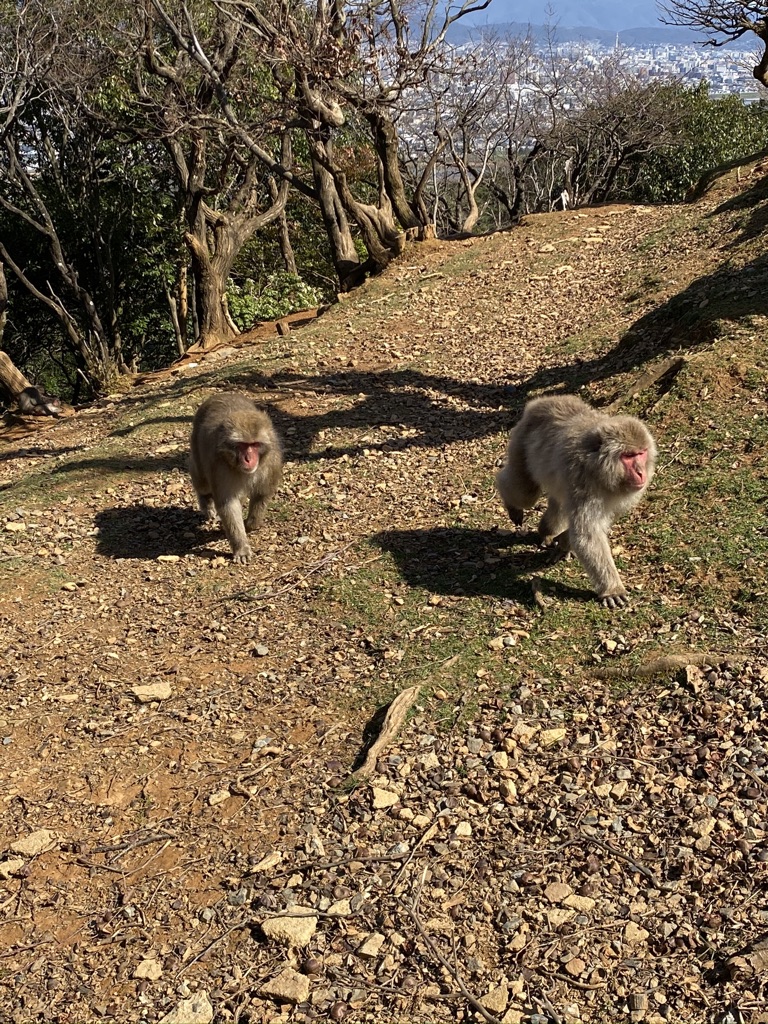
We were going to take the train to Osaka and then from Osaka maybe take a day trip to Nara, a town with a wild deer park, but I had a premonition that we would like Osaka too much to want to sacrifice a day to Nara, a place I was lukewarm about visiting. So we did a lifehack I would super recommend if you’re doing a similar route. We used the takkyubin service to forward our suitcases the day before we checked out of our Kyoto hotel to arrive the next day in Osaka, and travelled to Osaka via Nara so as not to lose a whole day to a Nara trip. It cost about £14 per bag to forward it, and they were already in Osaka by the time we arrived the next evening. One of my smartest holiday moves, if you ask me. Nara was nice, but not life-changing.
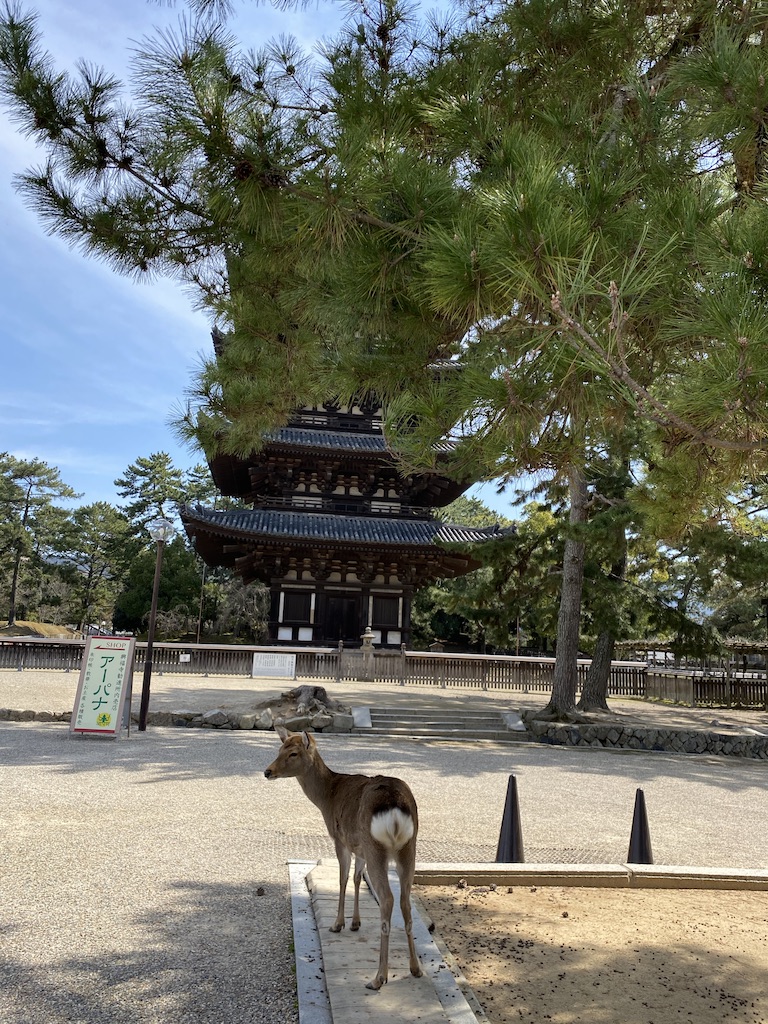
Should I bother with Osaka?
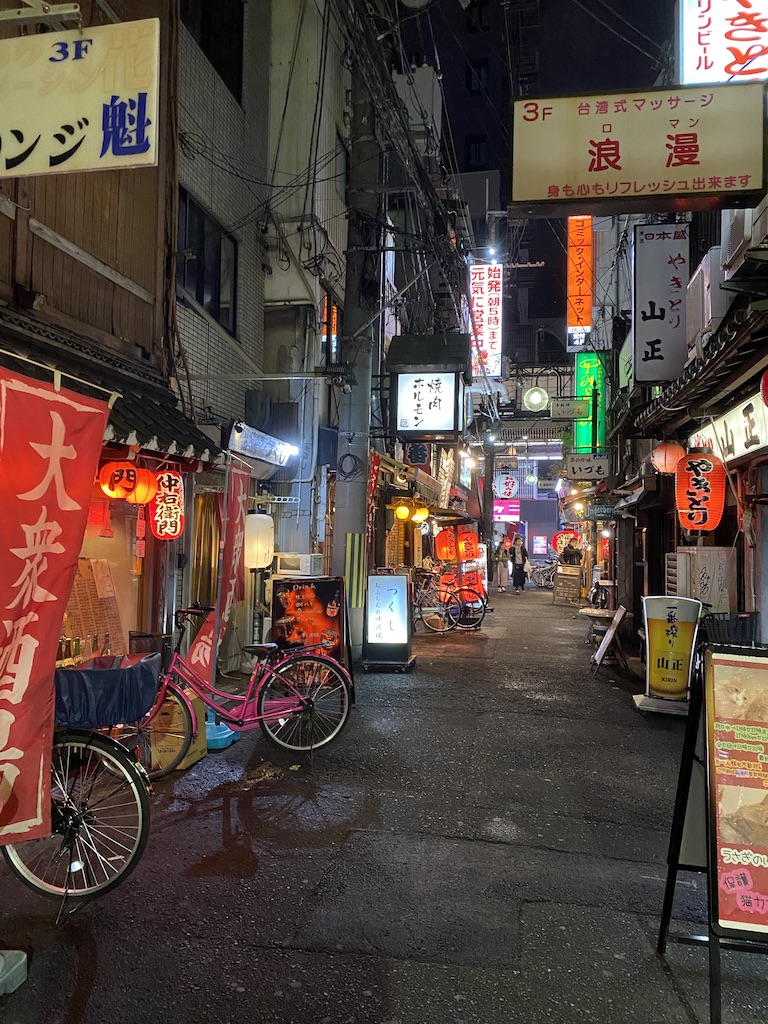
YES. Yes. A thousand times, yes. We loved Osaka. It’s grimy, bustling, disorienting, a densely-packed neon city that’s obsessed with eating and drinking. I adored it. We stayed in the Kamon Hotel Namba, which was definitely the most basic of all the hotels we stayed in but was in a perfect location for the wild nightlife of the city (while also being silent at night).
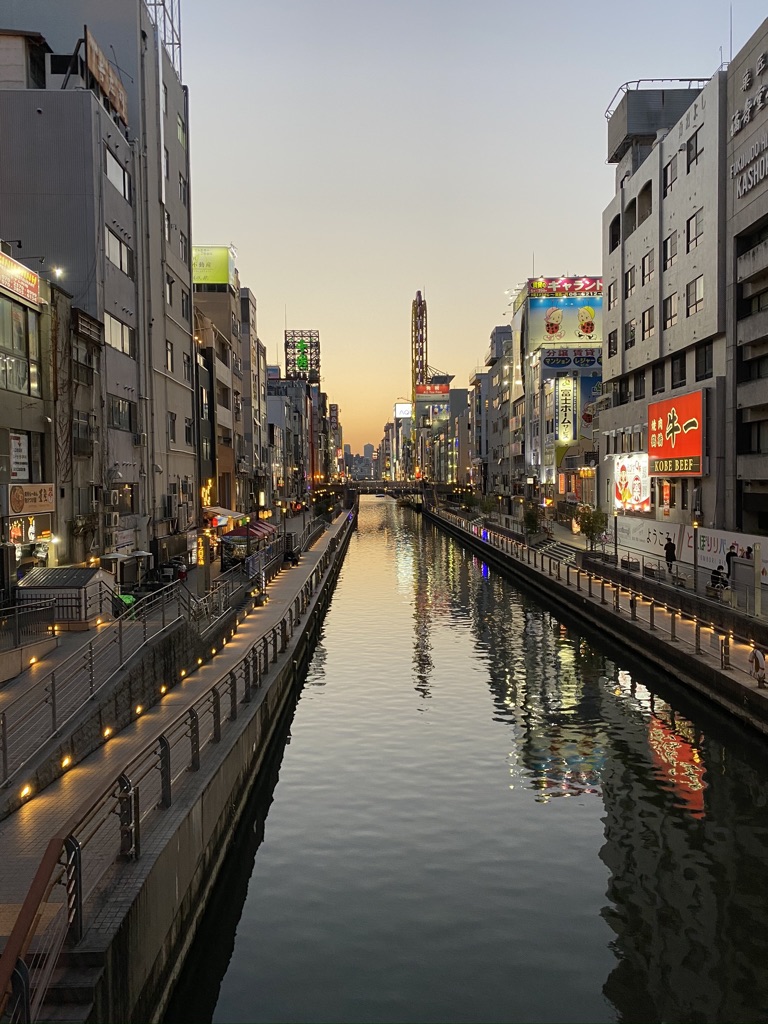
In Osaka, all we did was walk around and eat. No temples or shrines, no tourist attractions, just walking around different areas, stopping every so often for a little snacklet. Osaka’s food culture is so compelling that one night we were inspired to have three dinners.
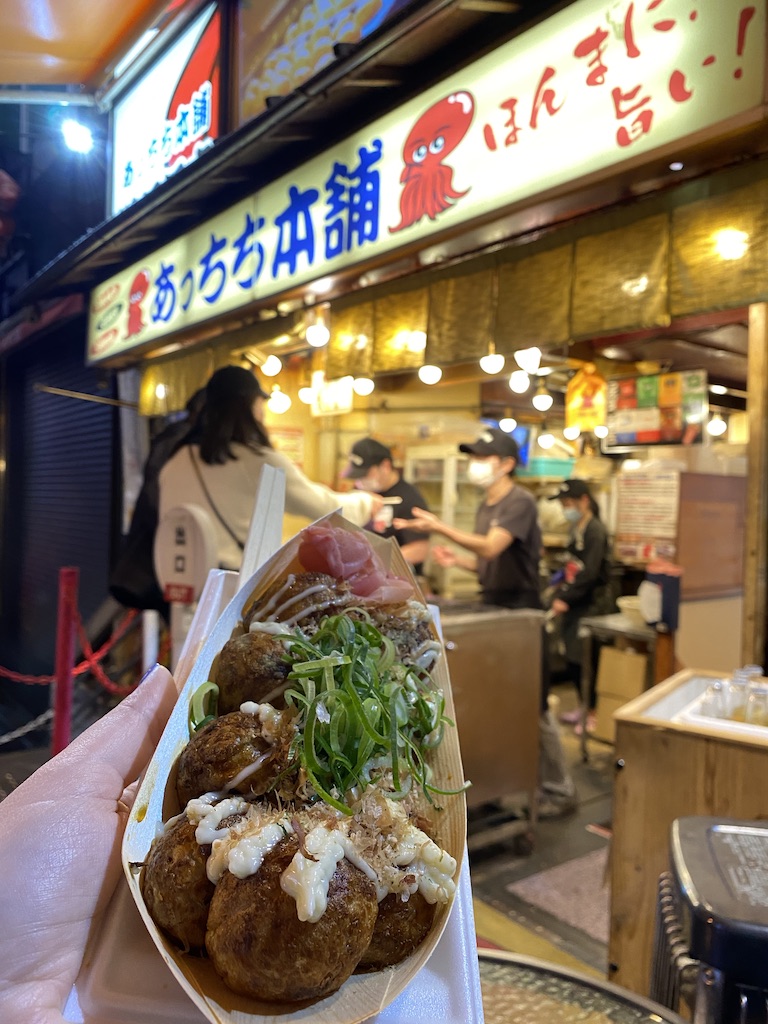
When I was planning the trip, I asked on Instagram how we should split our time between Kyoto and Osaka and many, many people advocated for spending a maximum of one night in Osaka and much more time in Kyoto. I can honestly say if I’d done that, our trip would have really suffered. We just adored Osaka and it felt so exciting to be somewhere that felt like illicit behaviour was barely lurking beneath the surface. Maybe some people would find it too dirty or too reminiscent of Amsterdam’s red light district, but I just can’t really comprehend being unmoved by Osaka.
Did you go to an onsen?
Nah. I know there are people who think it’s basically illegal to go to Japan and not go to an onsen but honestly, between being heavily tattooed and being fat, I just thought it was going to be more effort than it’s worth and not relaxing. There are ‘tattoo-friendly onsens’ if you want to research them, but I just really wasn’t bothered. While we’re on the subject of fatphobia, although I’m obviously conspicuously larger than almost all Japanese people, I didn’t experience any overt fatphobia.
What should I eat?
What shouldn’t you eat is the question. It’s incredibly hard to eat badly in Japan, even on a budget. I’ve mentioned convenience stores before, but I’m going to say it again: convenience stores bang. From fried chicken to absolutely unreal egg sandwiches to custard puffs, you could basically eat your way around Japan eating only at convenience stores. I prefer Lawson for fried chicken and 7/11 for egg sandwiches, but Family Mart is a good all-rounder.
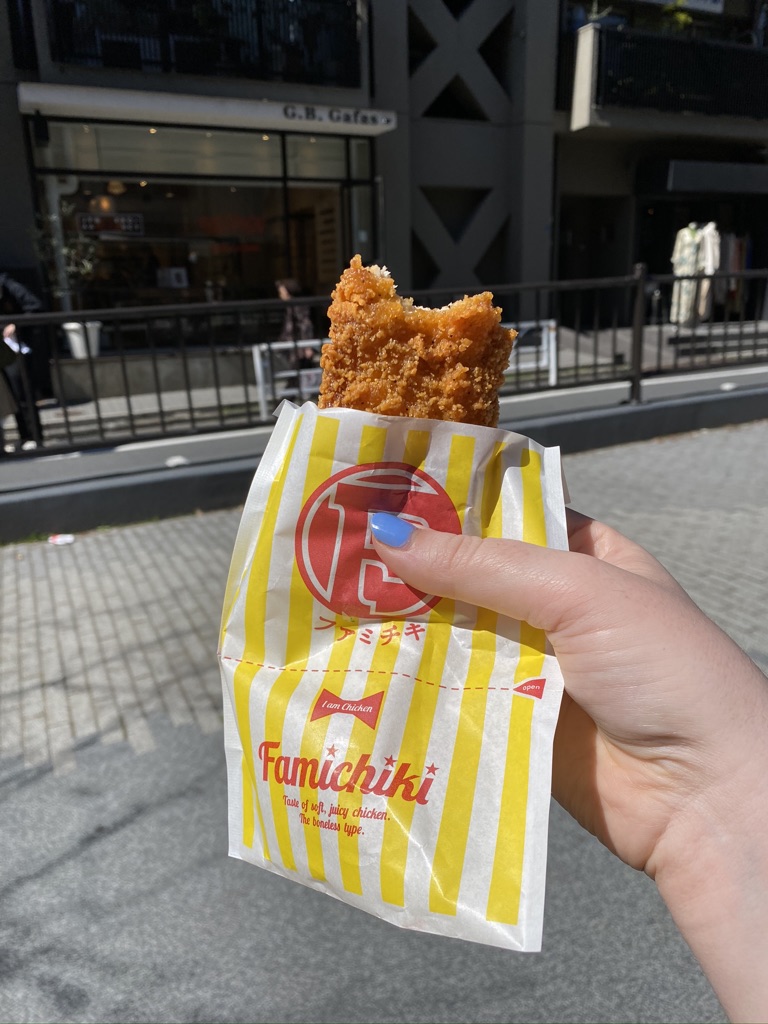
There were four chains that felt like the key to our food happiness.
Ichiran – I’m sure it’s not the best ramen you can get in all of Japan, but honestly, it’s about 1000 times better than any ramen I had ever had. It’s one of those restaurants you’re just glad is there- if you’re ever not sure where to go for lunch or dinner, you know there’s always Ichiran. You sit in individual booths divided by wooden screens so if you’re hoping for a romantic evening then this isn’t the one, but if you just want some truly delicious ramen, you should probably go to Ichiran. And if you’re staying in Shibuya and you can’t sleep, maybe just slink out of your hotel and go to Ichiran since that branch is open 24 hours.
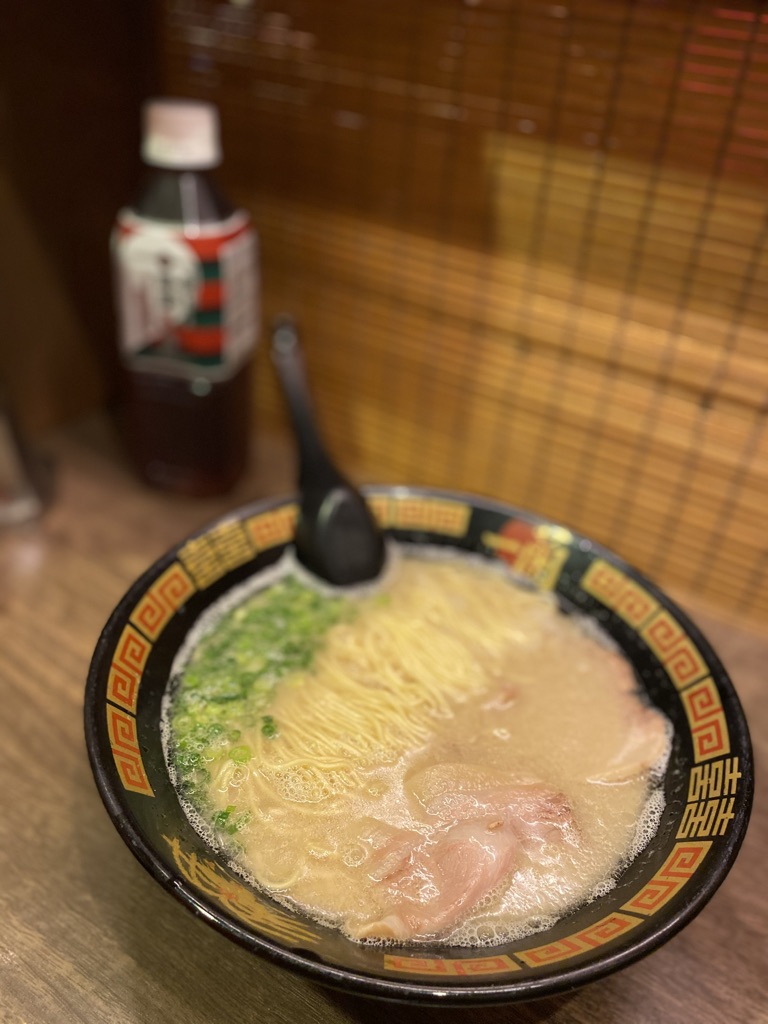
Ohsho – Ohsho is not haute cuisine. It’s a proper chain restaurant, the prices are low, it’s not fancy at all but it really ticks the boxes for a cheap and easy lunch. We would often stop off at an Ohsho in the middle of the afternoon for beer and gyoza and an opportunity to rest our weary trotters. We always marvelled at the solo diners with their plastic trays full of ramen, crab omelette, 12 gyoza and probably something else.
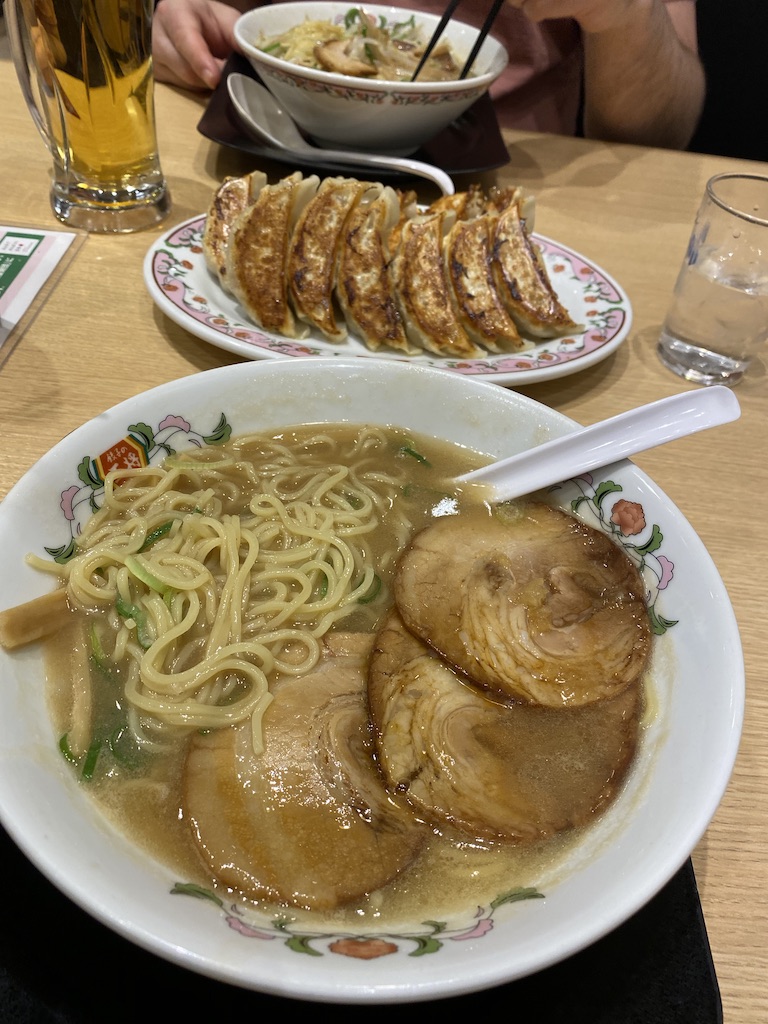
Mister Donut – I LOVE MISTER DONUT. I miss Mister Donut every day and don’t really understand why we can’t have one here. As it stands, I made the most of Mister Donut while I had the chance. It turns out that Japan loves donuts, which is absolutely fine by me, so there’s a Mister Donut in pretty much every part of Tokyo. My favourite is the Honey Old Fashioned but you might as well try a different variant every day. Cheap, easy and absolutely delicious for a lil snack.
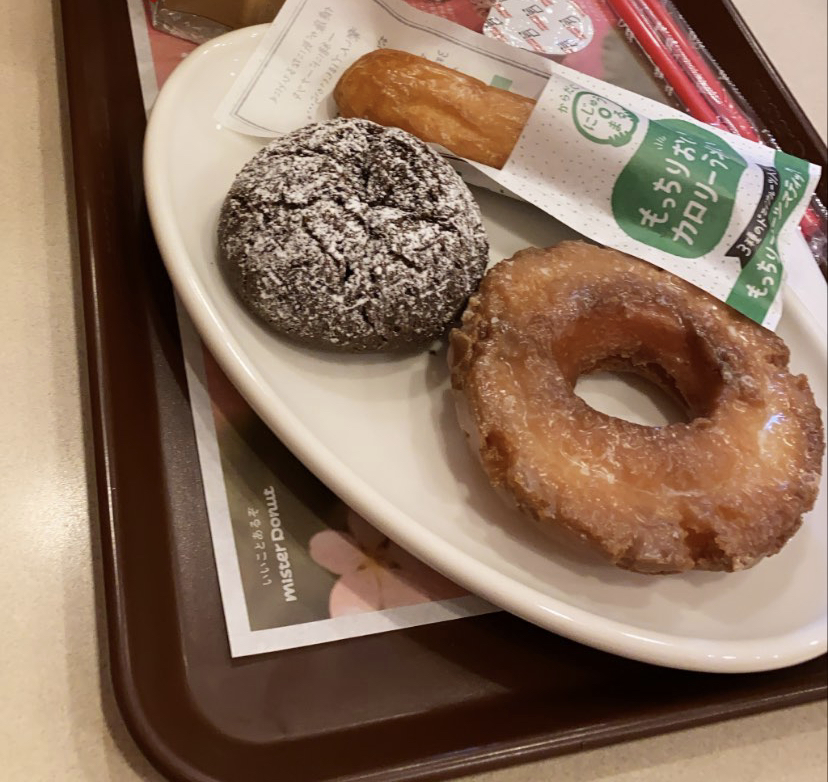
Torikizoku – No matter what night of the week or where the branch is or how big it is, there will always be a queue. It’s a yakitori place (chicken on skewers) and everything costs 298¥ (£2.25). Everything. Including the biggest mug of beer I’ve ever consumed in my life, and a delicious plate of fried chicken. Another great thing about Torikizoku is that you order on touch screens which have an English language option and if you click on the ‘i’ icon next to a dish, it explains to you what it is. So if it’s your first night in Japan and you’re not sure where to go and you’re nervous about needing to speak Japanese, you could do a lot worse than Torikizoku.
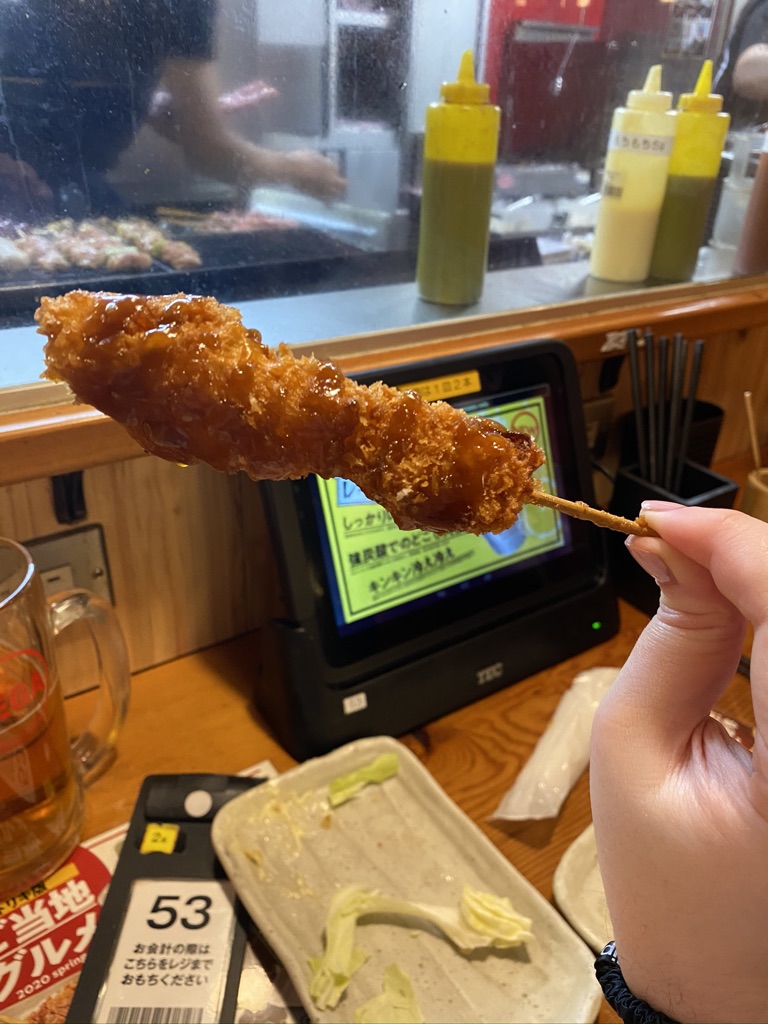
In Tokyo, I think my favourite meal was at Tontake in Shinjuku. I adore tonkatsu, deep fried pork cutlets, and there are loads of places to eat tonkatsu in Shinjuku or Tokyo in general. I had a few during my stay in Japan, but my favourite was at Tontake, a small family-run restaurant where everyone else was Japanese and we were the only people not smoking. The tonkatsu was truly unreal and it just felt like a perfect dinner.
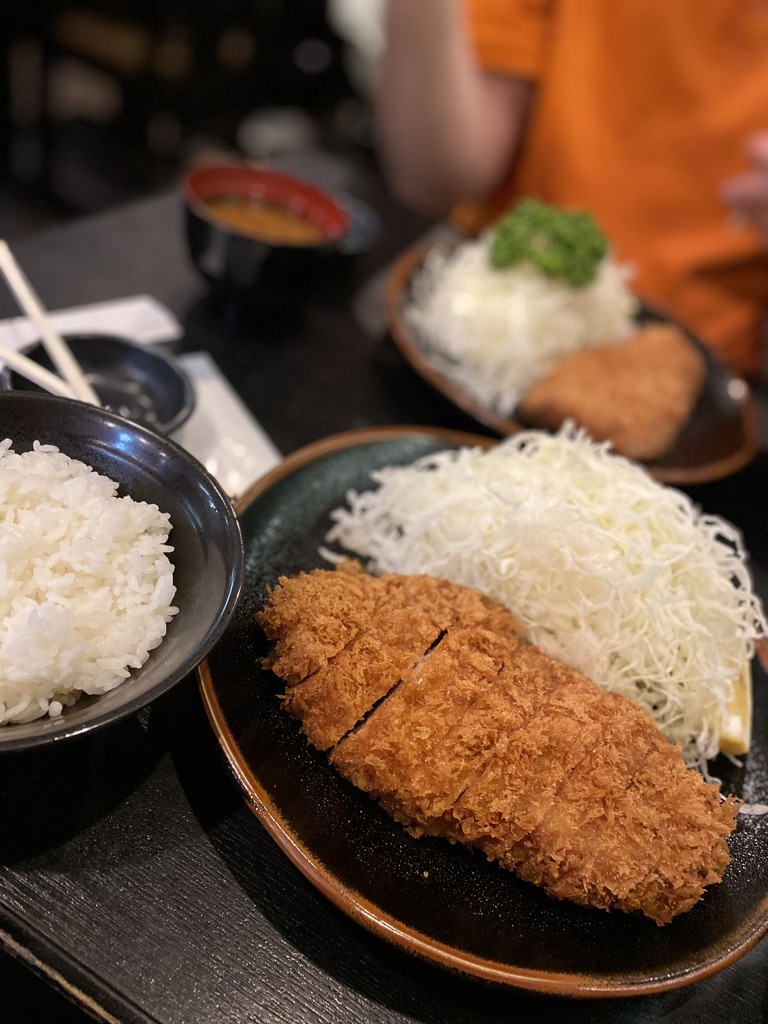
In Kyoto, we loved Koé donuts. It’s wildly popular with cute Japanese girls who seem to be buying at least two donuts each and eating them in the sleek cafe area. I also loved my visit to Menya Inoichi, another ramen place but who use a fish base rather than pork, and who do a truly delicious wagyu beef on rice side.
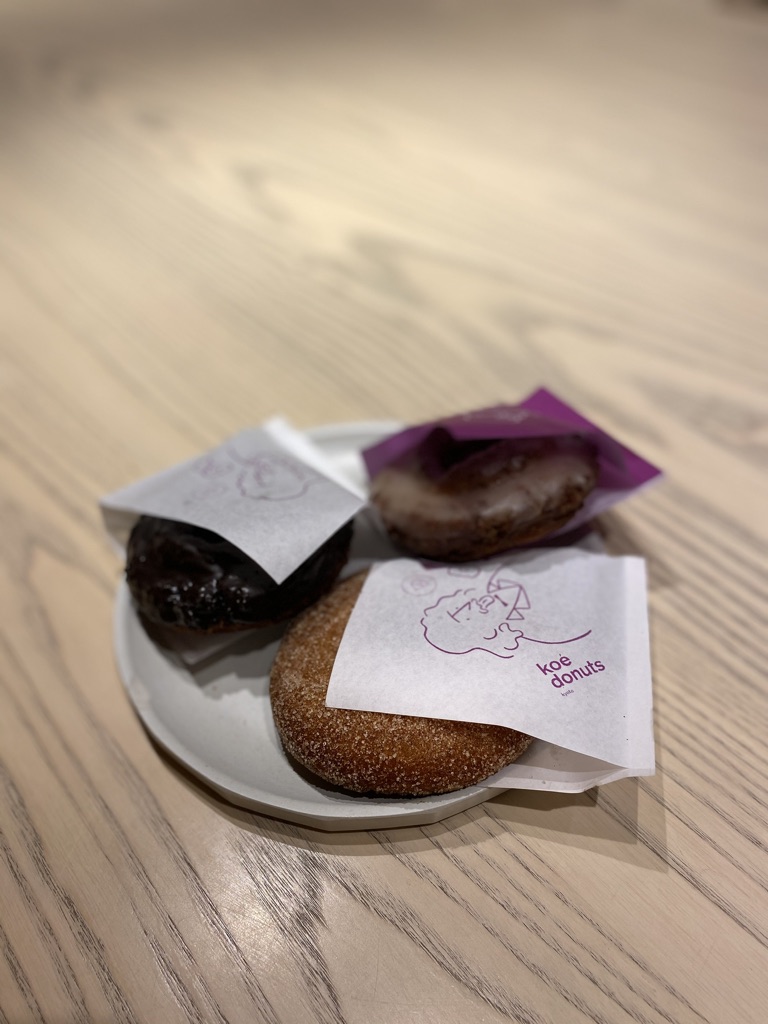
In Osaka, we loved… everything. I had the best food in Osaka in places I could probably never explain to you because we walked in off the street and paid in cash so I don’t even have a receipt to check the name. Some places I can recommend in Osaka are getting octopus balls from Atchichi-hompo, a shop front on the canal in Dotonbori which has a jingle so catchy you’ll be singing it for years to come. I would also advocate for going to Korea Town, seeking out a shop at Momodani 5-6-1 (look it up on Google Maps) and paying 500¥ (£3.50) for a tray of fried chicken from an old man. The best fried chicken I’d had since the night before when I previously had the best fried chicken of my life at an izakaya that I’ll probably never be able to find again.
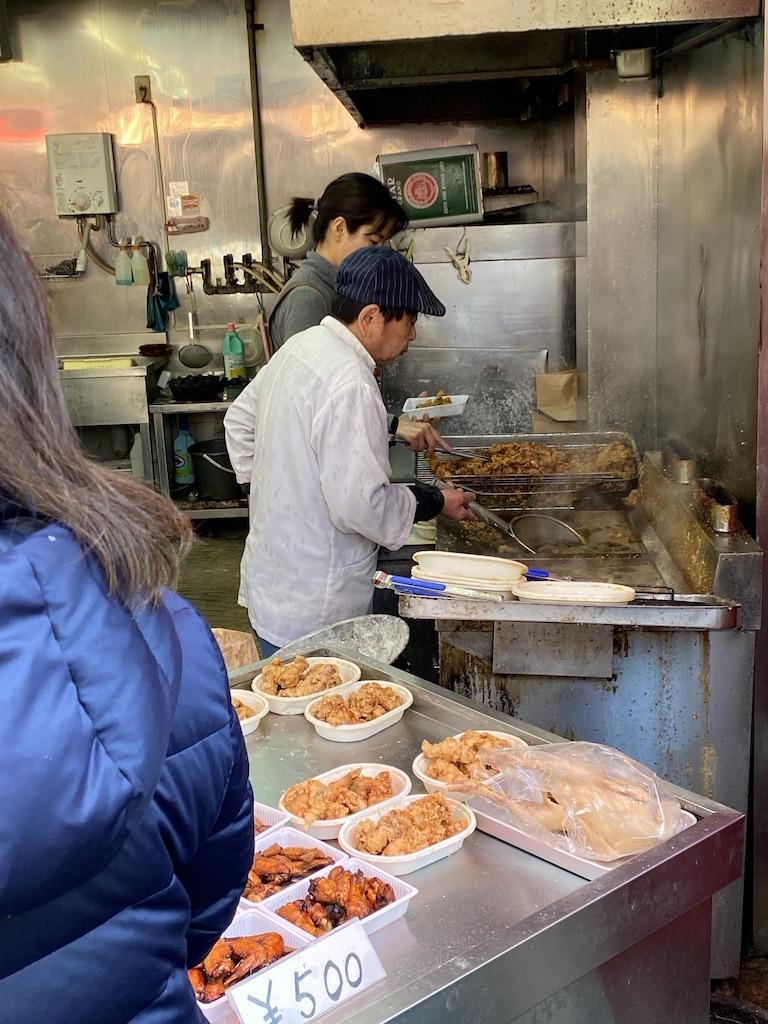
You seemed to do a lot of shopping…
I can’t argue with that. My suitcase increased by 5kg between my outbound and return flight and I regret nothing.
One thing I especially don’t regret is getting heavily involved with gachapon machines. For 300¥ (£2.25) you can choose your genre of machine and put your 3 x 100¥ coins and crank the handle. Out pops a capsule toy! I did this many, many times on our trip. I know we have capsule toys in leisure centres and arcades in the UK but they’re just not A Thing here in the way they are in Japan, in the sheer quantity, variety and availability of them. My favourite, unsurprisingly, was the Naomi Watanabe machines, which you can see here, and if you’re a fat babe who specifically wants to find them, in Tokyo there’s a machine outside Megadonki in Shibuya, in Kyoto there’s a machine in the middle of Nishiki market, and in Osaka there’s one in Janjanyokocho Nanyodori-shotengai. Obviously, they might have changed locations by the time you visit, but that’s where I found mine.
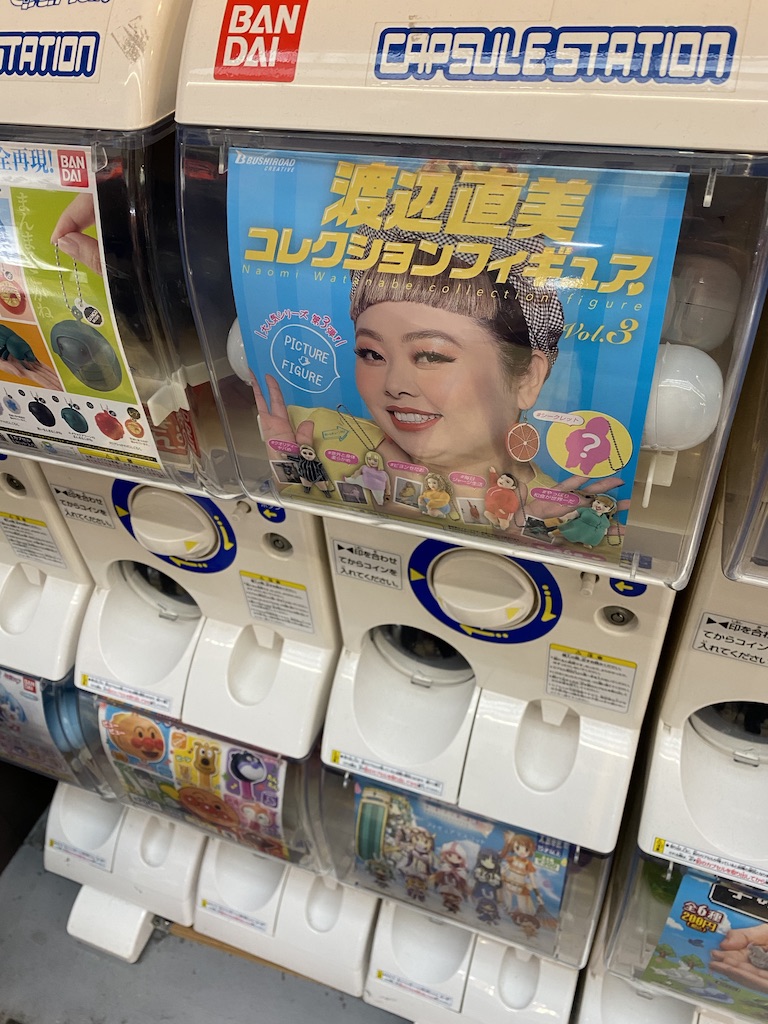
I also did a lot of beauty shopping. Japan is obsessed with cosmetics, and there are drugstores everywhere but to be honest most of my beauty shopping was done in Megadonki, the multi-storey megashop found throughout Japan (often open 24 hours) that sells everything under the sun and often at marginally lower prices than anywhere else. I picked up a lot of liquid eyeliners from different brands, DHC cleansing oil, DHC lip balms, Lululun and Saborino face masks, eyeshadows from Majolica Majorca which is a cheap spinoff brand of Shiseido, Biore Watery Essence sunscreen, SANA eyelash curlers and… loads more. All of which can be bought from Megadonki, along with all the other junk you want to pick up.
In Kyoto, I bought some really beautiful illustrated postcards at the intimidating-looking Kyukyodo Honten before walking up to the Hakuhodo flagship shop and stocking up on makeup brushes that’ll last me years.
Fat babes should also go out of their way to seek out Punyus, the clothing brand run by Naomi Watanabe. It’s not particularly cheap but it’s not wildly expensive either, and the graphic tees and sweaters are unlike anything I’ve seen from a UK brand. I wear a UK 22-24 on top and was buying their size 4, which is their biggest size.
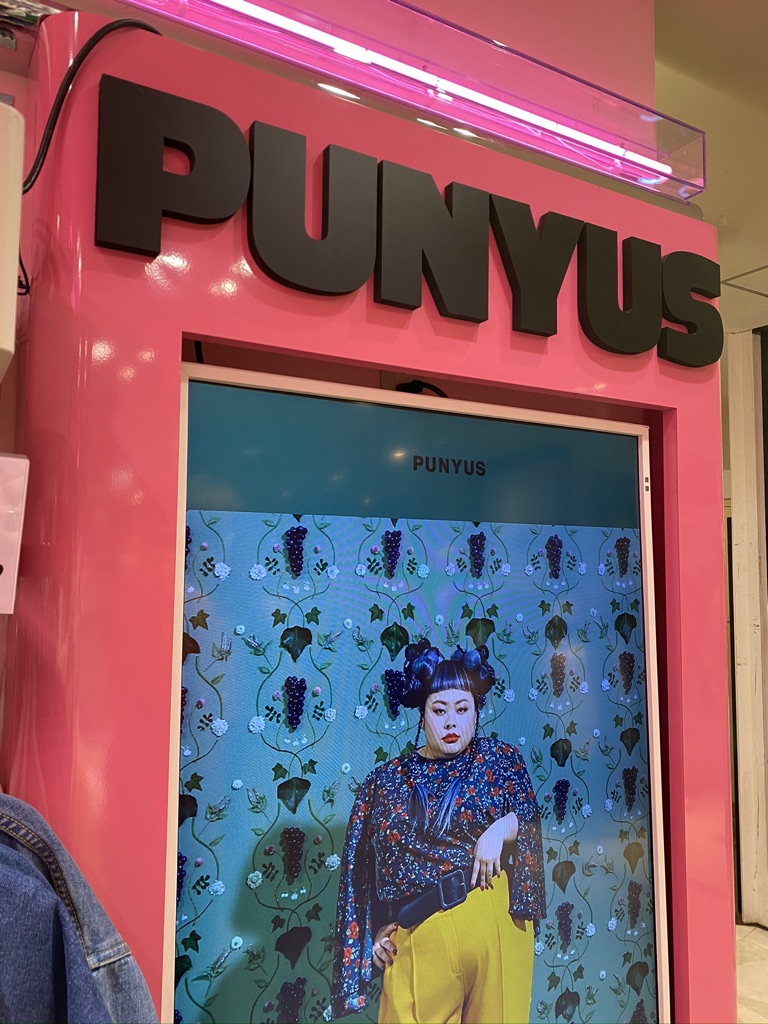
Is there anything else I should know?
The culture around smoking in Japan is the opposite of that in the UK. You can’t smoke on the streets, but you can smoke in many/most restaurants. This could be a great bonus for you, or a huge drawback.
Get a Pasmo or Suica card ASAP when you arrive in Tokyo. We were really lucky that my buddy Alice had given me two so we could just top them up at the airport and hop straight on the subway, but depending how new your phone and operating system is, you can also get them on mobile.
Adults love cycling on the pavement/in pedestrian areas so watch out.
Many, many restaurants are cash only, so make sure you come prepared. We found it easiest to withdraw money at the international ATMs you find in most branches of 7/11.
You kind of have to abandon a belief that human life occurs on the ground floor. In Japan if you’re going to a restaurant or a shop, it’s much more likely that you’ll be looking for something that’s either eight floors above your head or two floors under your feet.
Should I go to Japan?
Yeah. But if you’re vegetarian you should do your research.
And if you have any questions, please do drop me a line!
ps. While you’re here, I might as well ask you to preorder Melt My Heart, my second book which is out this summer. And why not pick up No Big Deal if you haven’t read it?

Thank you so much for this! I followed your travels while you were there. I’ve wanted to go to Japan for over 10 years now and this has just convinced me even more I must go!